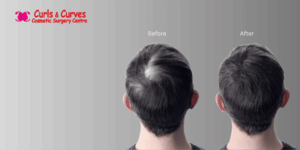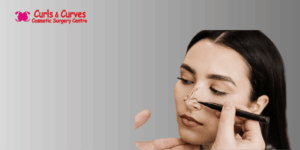It might be hard to believe, but for a lot of people with a deviated septum, breathing can be a daily challenge. The septum is the wall of cartilage and bone that separates the nasal cavity into two nostrils. When this wall is crooked or off-center, it’s referred to as a deviated septum, which can cause a range of health issues. In extreme situations, septoplasty surgery may be the only solution to correcting the defect.
In this article, we will look at what a deviated septum is, signs that you may need surgery and how septoplasty can help.
What is a Deviated Septum?
A deviated septum occurs when the nasal septum, which is supposed to be in the middle of your nose, gets shifted to one side. This condition is due to the misalignment at birth or the fracture, trauma, or the changes that happen over time.
As per the reports of medical experts, it is stated that almost all the people (around 80%) have some level of defect, but not always it will be a problem. Nevertheless, those who are diagnosed with a more serious deviation may develop chronic ailments that interfere with breathing, sleeping, and the general quality of life.
Common Symptoms of a Deviated Septum
Not every case of a deviated septum causes noticeable symptoms, if it is, however, the condition can be severely detrimental, at least in terms of daily activities. Here are some of the signs that point out to it, and the treatment could be beneficial for you if you have a deviated septum:
1. Difficulty Breathing Through One or Both Nostrils
One of the common signs of a deviated septum is the experience of difficulty in breathing, especially through one nostril. If the septum is severely misaligned, one side of the nose might be obstructed, making it harder to breathe. This problem can intensify while doing exercises or when you catch a cold or have allergies.
2. Frequent Sinus Infections
A deviated septum can limit the way of air through the nose, which will result in mucus accumulation and the run of sinus infection frequently. Sinusitis, or the inflammation of the sinus cavities which can, therefore, lead to symptoms like facial pain, pressure, and nasal congestion. Chronic sinus infections are commonly a sign that surgical intervention is required.
3. Nasal Congestion
In case you feel that your nose is blocked with no apparent cause, it may be attributed to the deviated septum. You may find that one nostril feels more congested than the other, and this issue can change from day to day, depending on the time of the day, your location, or the position you are sleeping.
4. Nosebleeds
A deviated septum can cause the nasal surface to become dry and irritate, which causes frequent nosebleeds. In case you have been getting nosebleeds regularly without any environmental factors being the reason for them like dry air, a deviated septum could be the reason.
5. Loud Snoring or Sleep Apnea
Breathing difficulties due to a deviated septum could be the reason for a person who snores or suffers from obstructive sleep apnea (OSA). OSA is a serious condition where a patient has repeated episodes of stops and starts in breathing while sleeping. If you or your partner notice loud snoring or pauses in your breathing at night, this may be associated with a deviated septum.
6. Facial Pain or Pressure
A deviated septum can lead to pressure on the nasal tissues, resulting in discomfort or pain in the face. This pressure may be particularly felt around the eyes, forehead, or cheeks, which is the reason why sinus headaches are frequently misdiagnosed.
When Should You Consider Septoplasty?
Septoplasty is a surgical procedure designed to correct the alignment of the septum, thus restoring the proper airflow and eliminating the symptoms. If you’re grappling with any of the above-mentioned symptoms, it’s probably time to discuss with your specialist whether septoplasty is the appropriate treatment for you.
Here are signs that surgery may be a good choice:
1. Chronic Breathing Issues
If you have used other treatments like nasal sprays, decongestants, or antihistamines, and you still have breathing problems, surgery might be the only solution. Septoplasty can open up by enlarging airflow capacity through the nose, making it easier to breathe.
2. Recurrent Sinus Infections
Frequent sinus infections that don’t respond to antibiotics or other treatments can be a result of a deviated septum. By straightening the septum, septoplasty can help to better drain sinuses, as well as lessen the chances of getting infected.
3. Persistent Nasal Blockage
If you are enduring a stuffy nose that is particularly blocked on one side and have tried various treatments with no success, septoplasty can be a solution for you. The surgery can remove the barriers and thus, restore the normal flow of air through both nostrils.
4. Sleep Issues Due to Snoring or Sleep Apnea
In case whether your sleep quality is being influenced by snoring or sleep apnea, your partner is affected, septoplasty may be of help to improve your breathing at night. Sufficient airflow not only decreases the chances of snoring but also may have a positive effect on mild to moderate sleep apnea.
What Happens During Septoplasty?
Septoplasty is mostly an outpatient procedure, which means that you can go home after the procedure. The surgery takes about 60 to 90 minutes, depending on the case’s complexity.
What to expect during Procedure:
- Anesthesia: Septoplasty is usually done under general anesthesia to make you feel comfortable during the procedure.
- Recovery: You should know that some of the typical side effects such as swelling, bruising, and mild discomfort may occur after the surgery. Full recovery can take several weeks, but most people return to their normal activities within a few days.





